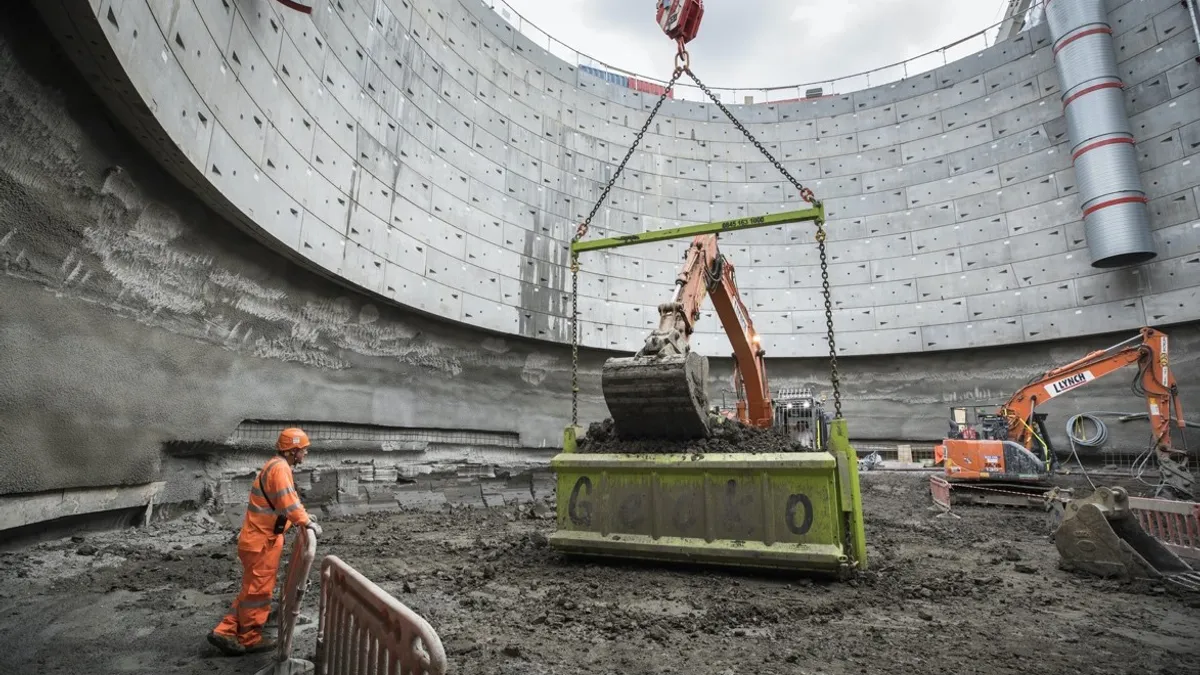Dive Brief
- Skanska is planning to use 3D-printed concrete in its work on HS2, a high-speed rail system reported to cost as much as $147 billion, under construction in the U.K.
- The joint venture between Skanska, U.K. civil contractor Costain and Austrian contractor Strabag will employ a technology called "Printfrastructure" that will print concrete structures on site instead of shipping them in prefabricated slabs or mixing and pouring it at the location.
- The machine is also capable of going into physically restricting spaces, removing the costs of sending people in to do the same job. Proof-of-concept trials are due to begin next spring, according to an HS2 press release.
Dive Insight
HS2 officials estimate that this approach, which involves printing the concrete with an internal lattice structure, can reduce the amount of concrete needed on the 330-mile planned line, thereby cutting down on carbon emissions by almost 50%. The railway is projected to finish its first phase, a line from London to Birmingham, by 2026.
HS2 plans to avoid disrupting any public transportation that could potentially be affected by construction, and claims that the technology can be used alongside busy railways. Because a machine is doing the work, the release said, trains and commuting can go on uninterrupted, whereas human construction would require either night work or a shutdown of railways.
3D printing has taken the world by storm in the past decade, and has seen significant progress in construction. According to a July market analysis by Grandview Research, the market is expected to have a compound annual growth rate of 91.7% through 2028.
Slashing costs and emissions are some of the big draws that companies are taking into consideration when thinking about using 3D printing. According to construction technology blog Autodesk, 3D printing can allow contractors to work quickly and efficiently. The technology is capable of printing a home within days, and it cuts down on workforce usage and environmental impact due to robotic automation and only using the necessary materials for the job.
For instance, in 2019, New York-based 3D-printing firm S-Squared 3D Printers claimed to have built a 500 square-foot home out of concrete in just 12 hours.
"It is important that we give technologies such as Printfrastructure the opportunity to flourish because of the possibilities it offers the industry to make a step change in how projects are delivered," said Andrew Duck, the joint venture temporary works manager, in the HS2 press release.















